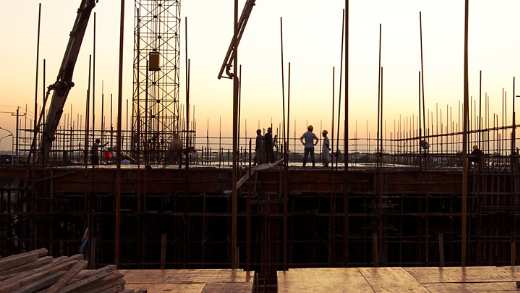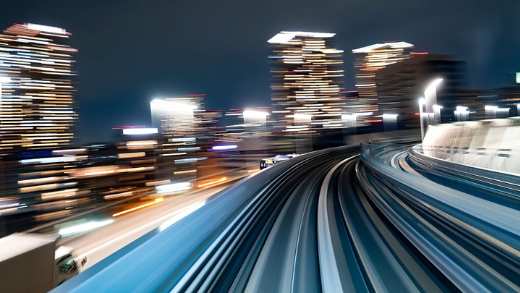The climate crisis will create winners and losers. As portfolio manager Françoise Cespedes explains, companies will have to adjust to changing physical conditions and new consumer expectations in a lower-carbon world.
4 minute read

Is the world moving fast enough to tackle climate change?
I’m not sure. Large, powerful nations such as the US and China, along with some European countries, are becoming more nationalist in orientation. They are not cooperating with the wider world, and that is a problem because we need more global cooperation if change is to happen.
As countries turn inwards and focus on their own priorities – which may or may not include the environment – achieving the objectives of the Paris Agreement is going to be much more difficult. If we don’t have top-down support, solutions will arrive later rather than sooner.
Of course, we also need more private initiatives. But the move towards the energy transition may take longer than expected because of the lack of cooperation at a policy level worldwide.
How well are financial markets responding to the climate crisis?
Lots of funds are being launched on climate-change themes. This trend is linked to the fact companies themselves are becoming much more vocal about how climate change will affect their operations, partly due to pressure from consumers.
If we don’t have top-down support, solutions will arrive later rather than sooner
People are taking a closer look at how they consume. They want products to be more environmentally friendly. Companies are taking account of this and changing their behaviour accordingly – not only regarding the environment, but also in respect of social issues – so that they are not exposed to reputational risk and do not lose business as a result.
How do you evaluate companies’ capacity to adapt to climate change when assessing potential investments?
We use data from CDP, a non-profit climate-data provider, to measure companies’ ability to deal with climate change. CDP scores companies on the extent to which they are operationally exposed to climate risks.
Companies will have to take action to reduce emissions, offset the effects of climate change by investing elsewhere
Companies will have to take action to reduce emissions, offset the effects of climate change by investing elsewhere – in reforestation, for instance – or tackle the physical impact where it threatens their day-to-day operations.
Some companies are focusing on reducing their CO2 emissions – chemical and cement producers that are currently heavy emitters, for example. These firms face the burden of higher CO2 prices and will have to cut their emissions to avoid paying too much for CO2 certificates in future, which would damage their financial prospects.
Other companies face immediate practical challenges due to climate change. Take chemical companies such as BASF and others operating on the Rhine. Recently, the water level of the Rhine became too low for them to deliver products to clients; they could no longer use the river to transport goods. These firms will have to find ways to adapt.
What is your view on the role of nuclear power in the energy transition?
We do not exclude nuclear from our climate transition strategy, because nuclear is one way to reduce CO2 emissions in the power-generation industry. Nuclear is a clean energy in emissions terms. But there are other risks linked to nuclear waste.
In my view, the best solution would be to switch directly from conventional fossil-fuel power generation to renewable energy
One issue is that operating nuclear plants could become unfeasible as global temperatures rise. Plants may no longer be able to use rivers to cool generators due to warming river temperatures, for example. And nuclear also poses risks to river biodiversity. So, climate change may impede our ability to use nuclear power.
In my view, the best solution would be to switch directly from conventional fossil-fuel power generation to renewable energy. Some countries, like China, are attempting to move from fossil fuels to renewables without first switching to gas or nuclear. But intermittent power generation from renewables makes this difficult. Battery technology needs to improve to enable the storage of electricity, so that the intermittency problem can be managed.
Where do you see the greatest investment opportunities?
Currently, the fastest-growing market segments linked to climate change are the ones that bring solutions, either in regard to mitigating climate change or adapting to its effects. These include renewable energy, as well as energy efficiency and sustainable transport. These industries are expected to grow much faster than conventional or old-economy industries such as oil and gas.
Independent power producers (IPPs), which only produce power from renewable energy, constitute an interesting new segment within utilities. This is where we see the bulk of investment in future power production being directed.
Are investors beginning to cluster around the same ideas?
There is significant interest in the smaller IPPs, as more investors recognise the need to improve the share of energy generated from renewables. But while the IPPs are not cheap, we don’t believe there is a bubble in valuations. Some of these companies have a huge backlog of projects and they tend to grow very fast, but part of the re-rating of these stocks has been driven by massive inflows coming from the recent development of climate equity strategies. Caution is needed in considering new investments.
Where are the opportunities in energy efficiency and sustainable transport?
Buildings produce high CO2 emissions and there is great potential to make reductions in this area. Think of companies in the materials sector that make insulation panels, or others that construct electrical components to make buildings “smart” in terms of lighting and air-conditioning use. These capital-goods segments are expected to grow rapidly, and companies with potential for rapid capital appreciation may emerge over the next few years.
We see more young people travelling by train, rather than plane, wherever feasible
On sustainable transport, rail is attractive. Rail travel is currently supported by regulation and we see more young people travelling by train, rather than plane, wherever feasible. Alstom, which provides rolling stock, says it is also seeing lots of goods that previously moved by plane now being transported by train. We expect to see governments make special infrastructure investments within Europe and elsewhere to improve rail routes to replace some mid-haul flights. All of which means trains and railway equipment should gain momentum in the next few years.
Which companies are focusing on adaptation?
Companies like Boskalis, which provides coastal defence equipment to address rising sea levels, come to mind. Air conditioning is another, as cooling technologies will be needed as global temperatures rise. More air conditioning will of course use more electricity but, by using electricity generated by renewables, we can mitigate the carbon footprint of the whole value chain. These are two of the niches that could see value creation in the next few years.


























